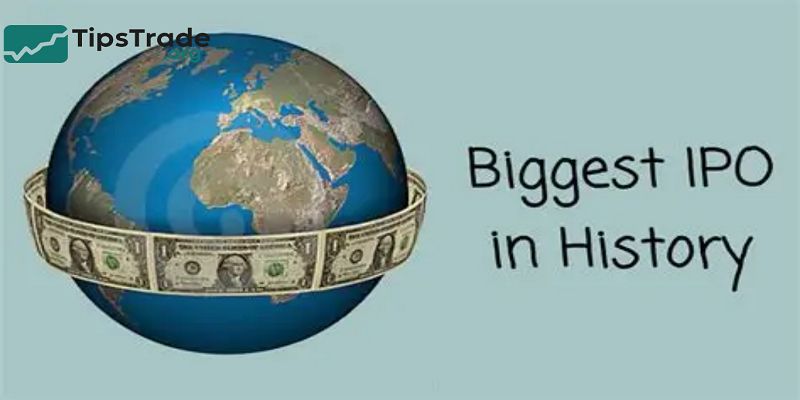Biggest IPOs have played a crucial role in shaping the global financial markets by raising billions of dollars and attracting massive investor interest. These landmark initial public offerings showcase some of the most valuable and rapidly growing companies in history, highlighting broader economic trends and investor confidence. Examining the biggest IPOs provides valuable insights into how businesses prepare for public listing, the factors driving their valuations, and the impact these events have on industries and market dynamics.
Understanding IPOs and Their Market Impact

An IPO (Initial Public Offering) represents a company’s first sale of shares to the public. It allows businesses to raise capital for expansion, research, or debt reduction. The size of an IPO—often measured by total capital raised—can reflect both the company’s market potential and investor confidence.
Large IPOs attract immense attention because they:
- Inject liquidity into markets.
- Set valuation benchmarks for entire sectors.
- Signal economic confidence or national pride (as in the case of state-backed firms like Saudi Aramco).
The impact of large IPOs extends beyond the issuing company.
They influence stock indices, trading volume, and sometimes government fiscal policies.
For instance, when Alibaba listed on the NYSE in 2014, it not only boosted tech investor enthusiasm but also solidified New York’s dominance in global capital markets.
See more:
- IPO Process: Step-by-Step Guide to Going Public
- What Is a Stock Broker? Essential Skills and Average Salary of Being a Stock Broker
- Long-Term Stock Investing: Benefits and Key Principles to Understand
- Blue Chip vs Penny Stocks: Which is Suitable for You?
The Biggest IPOs in History (Table + Analysis)
Below is a summary of the top 10 biggest IPOs ever recorded, based on total funds raised at the time of listing.
| Rank | Company | Year | Amount Raised (USD) | Exchange | Industry |
| 1 | Saudi Aramco | 2019 | $25.6 billion | Tadawul (Saudi Arabia) | Energy |
| 2 | Alibaba Group | 2014 | $25.0 billion | NYSE | E-commerce / Tech |
| 3 | Agricultural Bank of China | 2010 | $22.1 billion | Shanghai & Hong Kong | Banking |
| 4 | SoftBank Corp. | 2018 | $21.3 billion | Tokyo | Telecom |
| 5 | NTT Mobile Communications | 1998 | $18.4 billion | Tokyo | Telecom |
| 6 | Visa Inc. | 2008 | $17.9 billion | NYSE | Finance |
| 7 | General Motors (Re-IPO) | 2010 | $18.1 billion | NYSE | Automotive |
| 8 | Enel SpA | 1999 | $16.6 billion | Milan | Utilities |
| 9 | Facebook (Meta) | 2012 | $16.0 billion | Nasdaq | Technology |
| 10 | Deutsche Telekom | 1996 | $13.0 billion | Frankfurt | Telecom |
These IPOs share several traits: strong brand value, government or institutional backing, and operations in sectors critical to global demand—energy, technology, and finance.
Notable Examples of Massive IPOs

Saudi Aramco (2019): The Oil Giant’s Historic Listing
- In December 2019, Saudi Aramco made history by raising $25.6 billion, marking the largest IPO ever.
- The company—Saudi Arabia’s state-owned oil producer—listed just 1.5% of its shares on the Tadawul exchange.
- Despite limited foreign participation, local and regional demand was overwhelming.
Aramco’s listing was not merely financial—it was symbolic. - It reflected Saudi Arabia’s Vision 2030 strategy to diversify its economy beyond oil.
- The IPO valued Aramco at over $1.7 trillion, making it the world’s most valuable company at that time.
Alibaba (2014): China’s E-Commerce Empire Goes Global
- Alibaba’s IPO on the New York Stock Exchange in September 2014 raised $25 billion, the largest ever in the U.S. market.
- The event signaled the global rise of China’s tech sector.
- Investors saw Alibaba not just as an e-commerce firm but as a technology ecosystem spanning cloud computing, logistics, and payments.
- Its shares surged 38% on opening day, confirming strong international demand.
- Alibaba’s success also highlighted how foreign listings can amplify credibility and attract global capital, setting a model for other Asian firms.
Agricultural Bank of China (2010): Strengthening State Finance
- The Agricultural Bank of China (ABC) IPO raised $22.1 billion in a dual listing in Shanghai and Hong Kong.
- It was a major milestone in China’s financial modernization efforts.
- Despite global market uncertainty after the 2008 crisis, ABC’s listing demonstrated investor trust in China’s banking system.
- The IPO underscored the country’s capacity to mobilize capital domestically and abroad.
Visa (2008) and Facebook (2012): Shaping the Modern Digital Economy
- Visa Inc., the world’s largest payment processor, raised $17.9 billion in 2008, amid one of the most turbulent financial periods.
- Yet, Visa’s IPO succeeded because of its essential role in the global payment infrastructure.
- Similarly, Facebook’s IPO in 2012 raised $16 billion, attracting massive attention as the first major social media platform to go public.
- Although its debut was initially marred by technical glitches on Nasdaq, Facebook’s market value soon soared—reflecting the power of network-driven businesses.
Factors Behind the Success of the Biggest IPOs
The world’s largest IPOs share several critical success factors:
- Strong Brand Recognition: Global investors flock to companies they understand and trust.
- Market Timing: IPOs launched during bullish market phases typically achieve better valuations.
- Underwriter Support: Financial giants like Goldman Sachs, Morgan Stanley, and Citi provide credibility and stabilize pricing.
- Sector Momentum: Industries like tech, energy, and finance attract broad investor bases.
- Regulatory Clarity: Transparent governance and disclosure standards increase investor confidence.
A Bloomberg study (2023) noted that timing accounts for nearly 35% of IPO valuation outcomes, emphasizing how market sentiment can make or break a debut.
Lessons Learned from Record-Breaking IPOs

While large IPOs can be spectacular, not all perform equally post-listing. Some lessons stand out:
- Valuation Discipline Matters: Overvaluation can lead to post-IPO price drops (e.g., Facebook’s early performance).
- Long-Term Performance > First-Day Gains: True success lies in sustained growth and governance, not immediate hype.
- Investor Education Is Key: Many retail investors misunderstand IPO lockups and share dilution.
- Regulatory Stability Builds Trust: Countries with strong investor protection laws attract more successful listings.
These insights guide not only companies planning to go public but also investors seeking stable, long-term returns.
Recent & Upcoming Mega-IPOs (2024–2025)
As global markets recover and technology continues to evolve, several upcoming or recent IPOs are attracting attention:
| Company | Industry | Estimated Valuation (USD) | Expected Year |
| Databricks | AI / Data | $40 billion | 2025 |
| Stripe | Fintech | $50–60 billion | 2025 |
| Arm Holdings (Re-IPO) | Semiconductor | $54 billion (2023) | 2023 |
| Social Media | $10 billion | 2024 | |
| Shein (rumored) | E-commerce / Fashion | $60 billion | 2025 |
These next-generation IPOs highlight new frontiers in AI, data analytics, fintech, and sustainable tech. Experts expect the 2025 IPO pipeline to remain strong, particularly in sectors aligned with digital transformation.
Conclusion
Biggest IPOs continue to influence the investment landscape by setting benchmarks for capital raising and market performance. These offerings often create significant opportunities for growth and innovation while drawing worldwide attention from investors and analysts. By studying the biggest IPOs, one can better understand the challenges and successes of entering public markets, as well as the strategic decisions that lead to long-term value creation.
>>See more:
- Market Cap Stocks: What They Are and Why They Matter for Investors
- What is Stock Liquidity? Why It’s Important for Investors
- How To Buy Stocks in 4 Steps: Quick-Start Guide for Beginners
- How To Read A Stock Chart: Exploring Key Types & Pro Tips

